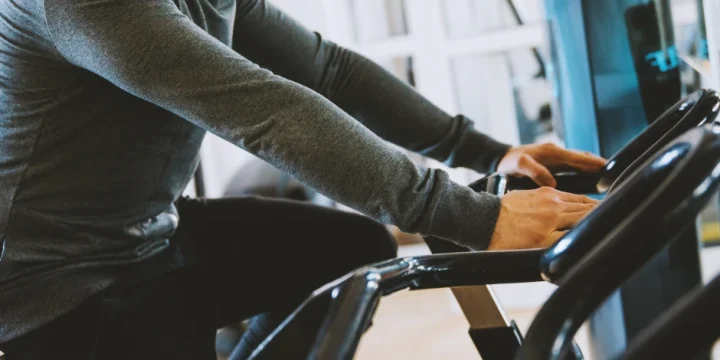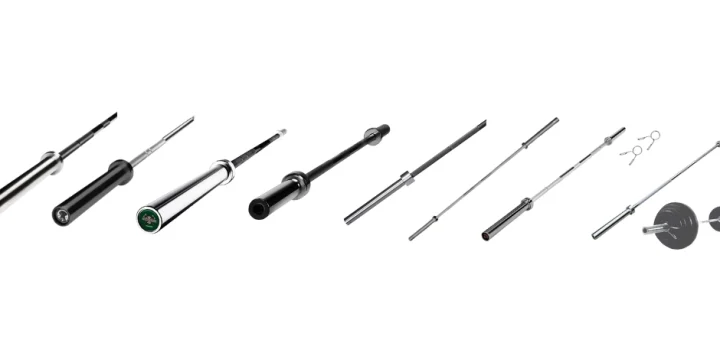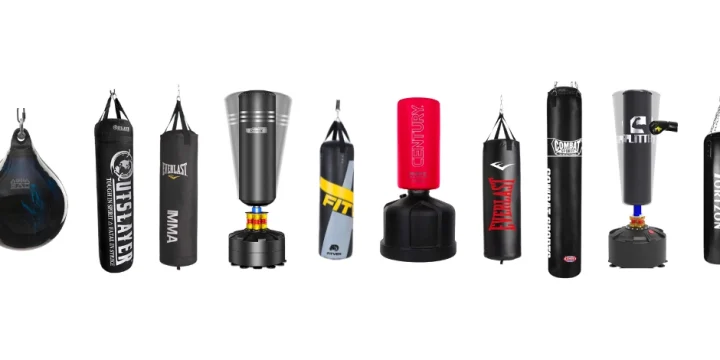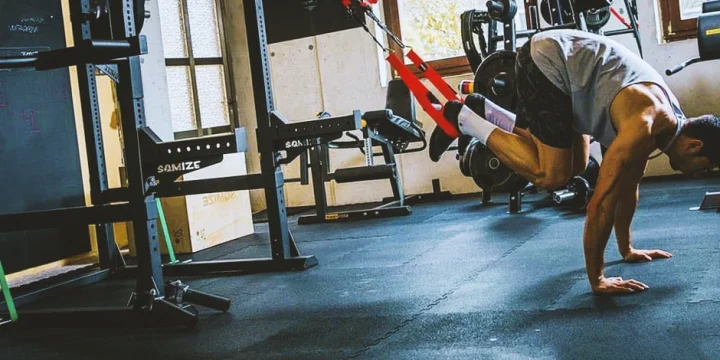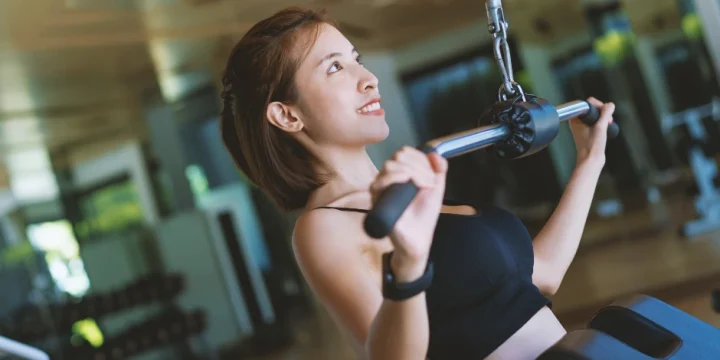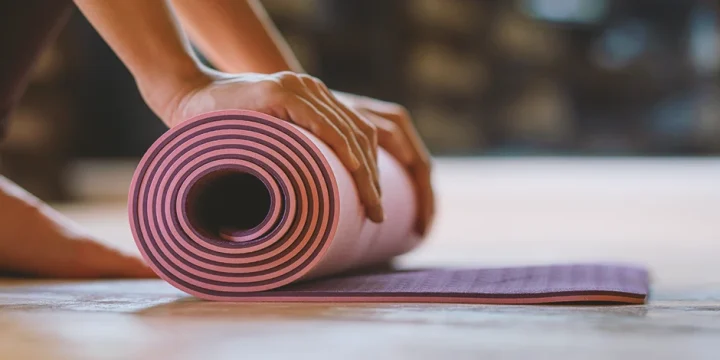Setting up a home gym should never be just about choosing the right equipment, machines, and free weights, as you also have to consider what will be underneath your feet.
And the more equipment you’re going to be using, the more important this decision will become.
So, our team did some research, and we visited 25 different home gyms of friends, family, and colleagues. When we looked at different materials and found an interesting theme with a lot of these configurations.
Let me show you what to focus on.
Quick Summary
- For optimal home gym flooring, rubber is the best choice due to its durability and safety for heavy cardio machines and weights.
- Rubber mats, compared to other materials like foam, carpet, and vinyl, offer superior wear resistance and longevity in home gyms.
- Gym flooring should be at least half an inch thick to effectively support heavy equipment and weightlifting activities.
- I found that investing in high-quality gym flooring, particularly rubber, is essential for a safe and effective home workout environment.
What Type of Flooring Is Best for a Home Gym?
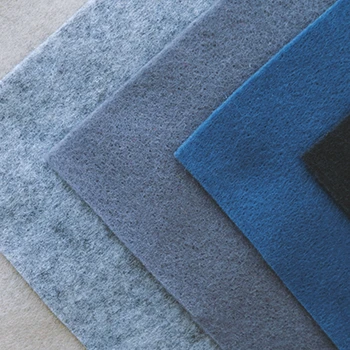
Rubber flooring is best for a home gym setup as it combines durability and safety for athletes that use heavy cardio machines and weights.
Out of all the home gyms we visited, those with rubber floor mats showed the least amount of wear and tear.
The other common material you find is foam, and it’s often similar to the foam you have in yoga mats that don’t tear too easily.
Then there are carpet and vinyl tiles as well that can add some protection against scratches on the underlying floor.
The two hardest-wearing materials are rubber and vinyl [1].
Based on our research and testing, we found there is much better bounce off the rubber when weights drop down, and you’ll also get great sound insulation.
In addition to our observations, a study published on Research Gate also supports the choice of rubber for high-traffic and impact areas in home gyms [2].
How Thick Should Home Gym Flooring Be?
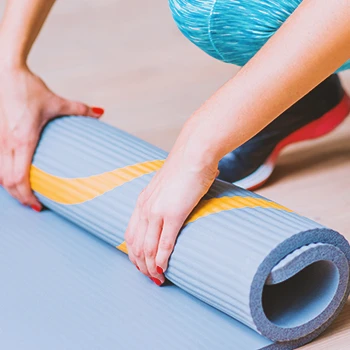
From what we've seen and tested, home gym flooring needs to be at least half an inch thick to withstand the rigors of heavy cardio machines and regular weight lifting
Looking at commercial gyms where you’d have the squat and power rack set up, you’ll typically find rubber mats that are 5/8 inches thick, which would probably be classed as commercial-grade.
What we found with thinner gym flooring is that dropping something heavier won’t get much of a bounce.
That means the sound will travel, and you’ll likely damage the underlying floor as well.
“While thicker mats provide added cushion and support, thinner ones tend to be lighter and easier to travel with.”
- Daniel Bubnis, M.S., NASM-CPT
Do Rolls or Mats Work Better?
Mats generally tend to work better as home gym flooring.
We've used rolls similar to large yoga mats, but they often shift during intense workouts, unlike the stability offered by mats and tiles.
One reason why you’d probably choose rolls is if you move your home gym equipment out of the way when you’re finished.
This is typically the case if you use a spare room rather than a dedicated garage gym that you leave fully set up throughout the year.
Otherwise, make the extra investment and buy interlocking mats or tiles, as they will stay in place and not shift around.
If you are not sure what to pick, feel free to check out our home gym essentials or home gym ideas.
Check for Safety Features
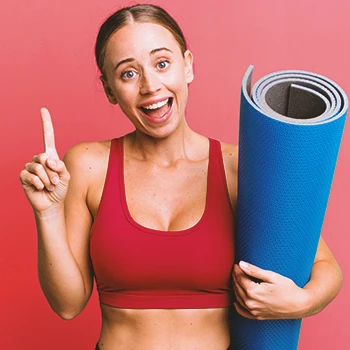
When it comes to rubber floor mats, there are two things to look out for from a safety perspective.
First of all, look for ones that have a solid interlocking system.
This is the only way you can make sure you don’t end up with gaps that can become tripping hazards.
Secondly, check for a kind of riffling print on the surface.
Just like on rubber tires, we found this prevents slipping when sweat drips onto the mats.
Installation Tips
Here are comprehensive tips to help you get the most out of your home gym flooring:
- Measure your space accurately: Before purchasing any flooring, measure your gym area carefully. Consider irregularities in the room shape and plan for a little extra material to account for cutting and fitting.
- Choose the right material: Depending on your workout routine, choose a material that suits your activities. Rubber tiles or mats are ideal for weightlifting, while foam or cork might be better for yoga or Pilates.
- Prepare the subfloor: Ensure the subfloor is clean, dry, and level. Any debris or moisture can affect the flooring's adherence and longevity. For concrete floors, consider a moisture barrier if dampness is an issue.
- Plan the layout: Before permanently laying down the flooring, do a dry run. Place the tiles or mats as you would want them installed to ensure a proper fit and to decide where you might need to make cuts.
- Cutting to fit: If you need to trim any pieces, use a sharp utility knife and a straight edge. Make several shallow passes to get a clean cut rather than trying to slice through in one go.
- Adhering tiles or mats: For interlocking tiles, ensure they are securely connected. For rolls or larger mats, use recommended adhesives or double-sided tape to prevent slipping.
Maintenance Tips
Here's how to maintain your gym flooring to ensure it lasts a long time:
- Regular cleaning: Sweeping or vacuuming regularly to remove dust and debris is essential. For deeper cleaning, use a mop with mild detergent and water, but avoid using harsh chemicals that could degrade the material.
- Spot cleaning: Immediately clean any spills or stains to prevent them from setting in. Use a gentle cleaner and avoid abrasive scrubbing tools.
- Avoid heavy equipment damage: While gym flooring is durable, sharp edges or heavy equipment can cause indentations or tears. Use protective mats under heavy machinery and avoid dragging equipment across the floor.
- Sunlight and heat exposure: If your gym has windows, be aware that prolonged exposure to sunlight can fade or degrade certain flooring materials. Use blinds or curtains to minimize exposure.
- Replacing damaged sections: One advantage of tiles or interlocking mats is the ease of replacing damaged sections without redoing the entire floor. Keep a few spare pieces for quick swaps.
FAQs
Do You Need Gym Flooring for Home Gym?
Yes, you need gym flooring for a home gym. Even if you just do bodyweight exercises, you’ll want to have a cushioning effect on your body. And a floor mat will also protect a wood or carpet floor from sweat dripping down on it.
Is Foam or Rubber Better for Home Gym Floors?
Rubber tends to be better for a home gym because it is a lot more durable and less likely to tear. Foam can work fine for yoga and bodyweight exercises like plyometrics, but anything involving weights and machines is better done on rubber.
References:
- https://www.americanfloormats.com/rubber-mats-versus-vinyl-mats/
- https://www.researchgate.net/publication/318852624_Gym_flooring_-_designing_for_impact_and_prediction
About The Author
You May Also Like
